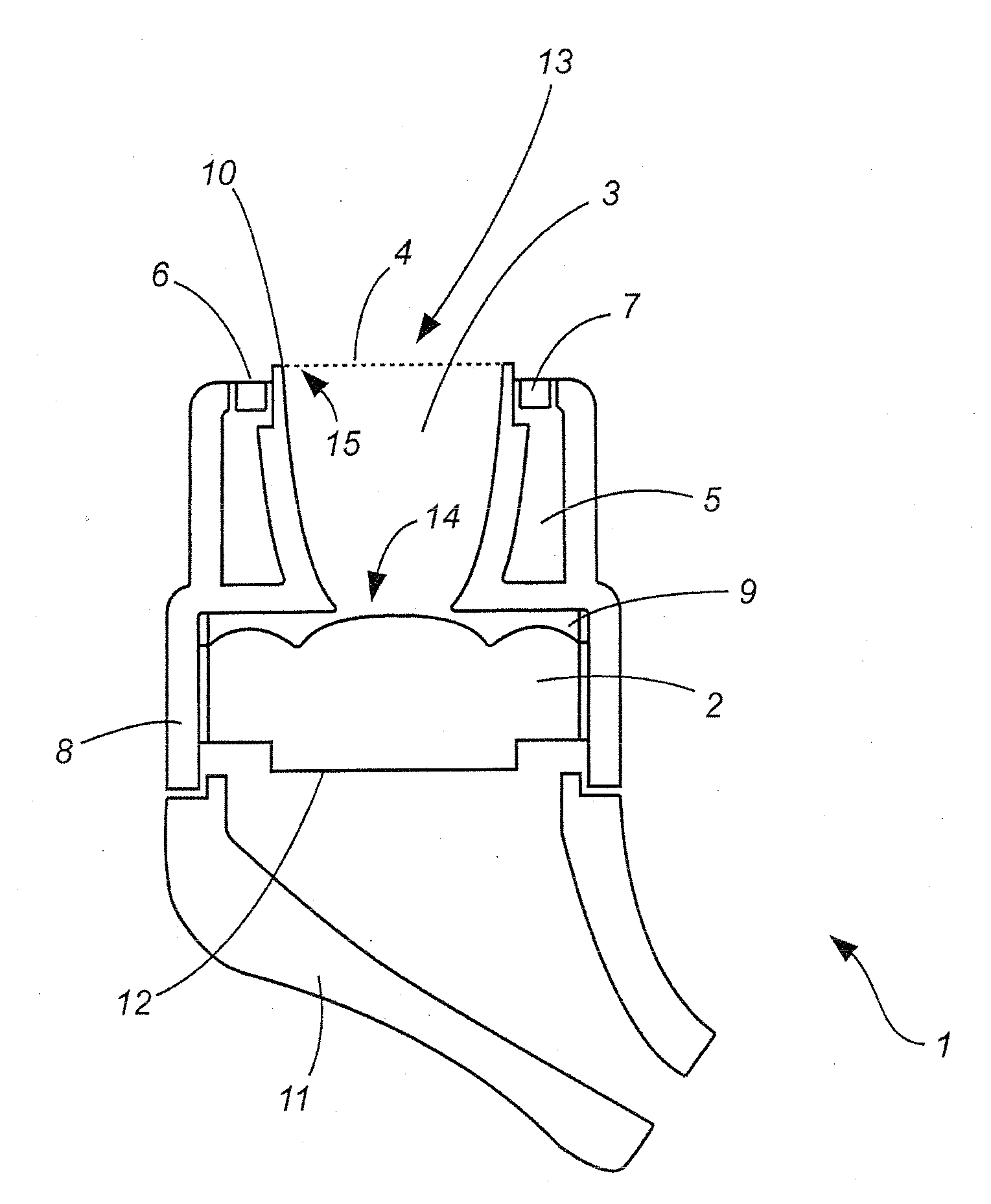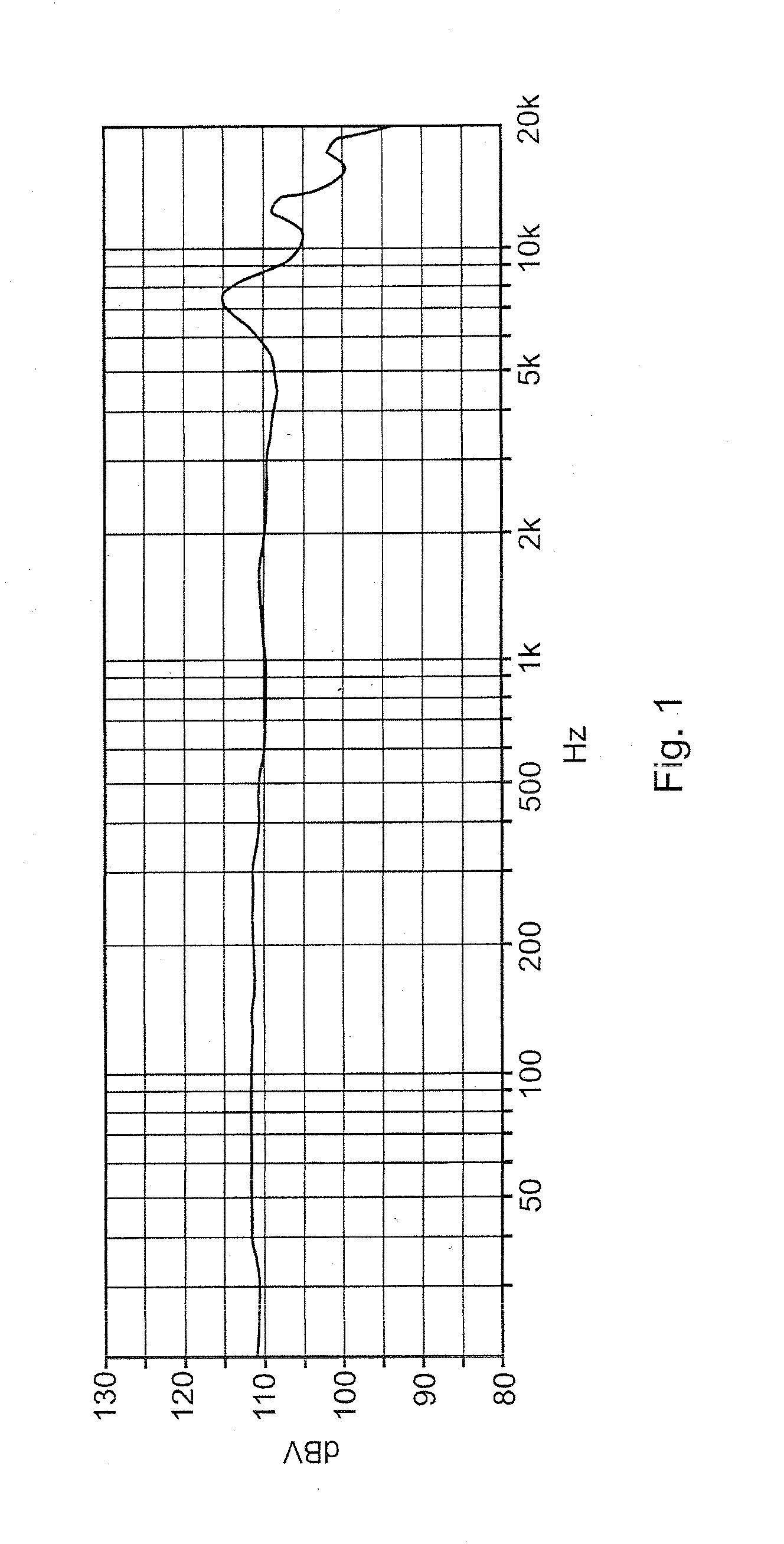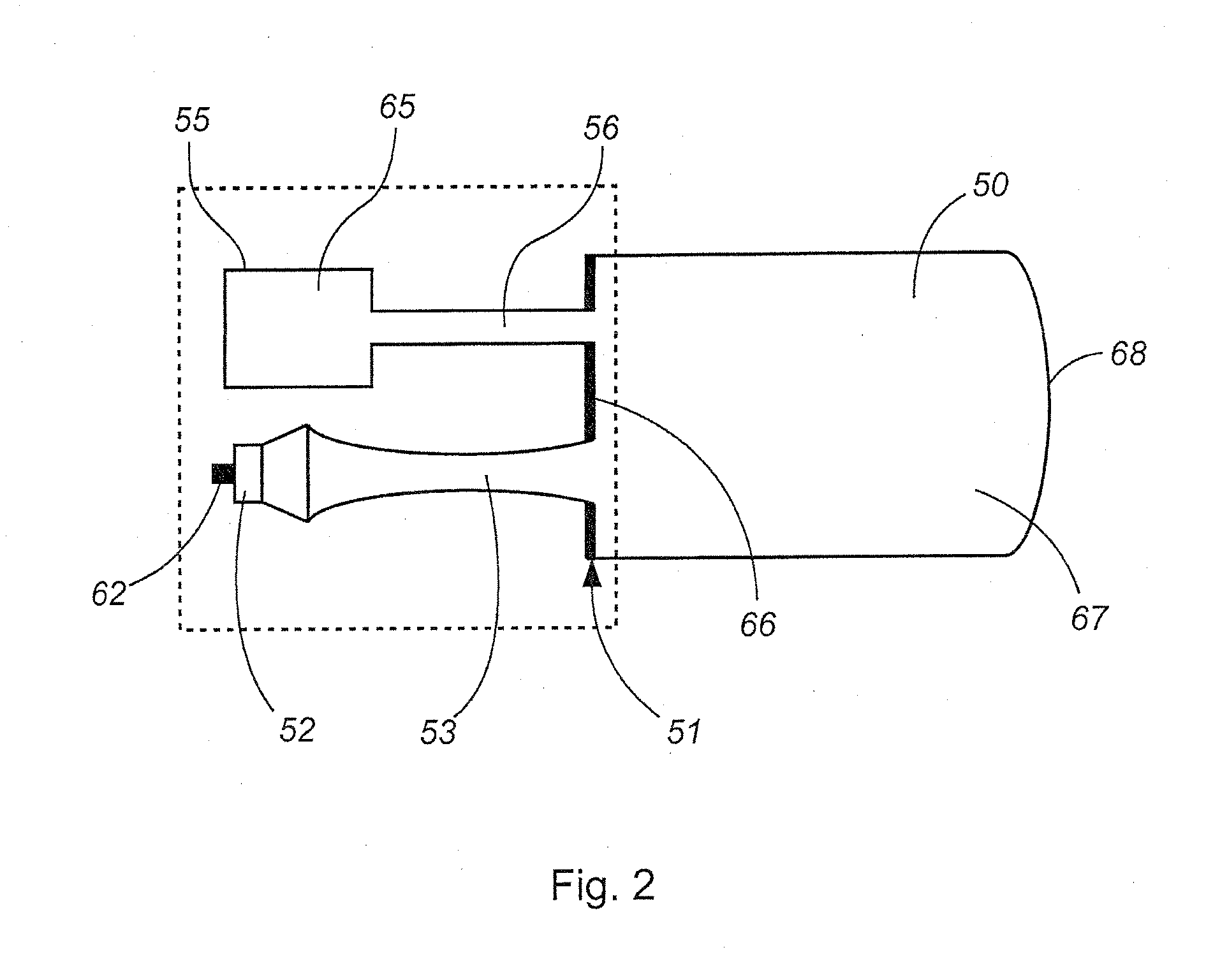Earpiece
a technology of earpieces and ear pads, which is applied in the direction of earpiece/earphone attachments, transducer details, electrical transducers, etc., can solve the problems of detrimental effect on sound quality, and achieve the effect of improving the sound quality of earpieces and reducing excessive ear canal resonan
- Summary
- Abstract
- Description
- Claims
- Application Information
AI Technical Summary
Benefits of technology
Problems solved by technology
Method used
Image
Examples
first embodiment
[0052]FIG. 2 shows a view illustrating the principle of an ear canal earpiece 51 according to a An ear canal 50 is air-tightly closed with an ear canal earpiece 51. The ear canal earpiece 51 has a volume element 55, a tube portion 56, a sound transducer 52 and a sound guide element 53. The volume element 55 delimits a volume 65. The volume 65 is connected by way of the tube portion 56 through an air-tight terminal closure 66 of the ear canal 50 to a second volume 57 of the ear canal 50. The ear canal 50 is closed off on the side opposite the closure 66, with an ear drum 68. The acoustic sound transducer is connected by way of the sound guide element 53 through the air-tight closure 66 to the second volume 67 of the ear canal 50. The ear canal earpiece 51 also has an electrical connection 52 by way of which the acoustic sound transducer 52 is fed with an electrical signal which the acoustic sound transducer 52 converts into a corresponding sound.
[0053]Sound waves pass from the acous...
second embodiment
[0056]FIG. 3 shows a sectional view of an ear canal earpiece 1 in accordance with a the ear canal earpiece 1 has a first side 13 (towards the ear) which serves for insertion into an ear canal of a user. The ear canal earpiece 1 further includes a first housing portion 8 which has a volume element 5 and a sound guide element 3. The sound guide element 3 has a first end 14, a second end 15 and a through opening 4. The through opening can be in the form of a sound guide unit or a sound guide canal. The first end 14 faces an acoustic transducer 2 and the second end 15 faces the first side 13 of the ear canal earpiece 1. The sound guide element 3 with the sound guide unit which blends into the opening 4 serves to guide a sound signal to an ear canal of a user. The first housing portion 8 also has a receiving unit 9 for the acoustic transducer 2, a second opening 6 of the volume element 5 and the first opening 4 of the sound guide element 3. A damping element 7 which is formed from a fab...
third embodiment
[0060]FIG. 5 shows a sectional view of an ear pad 100 and an ear canal earpiece 101 in accordance with a The ear pad 100 has a first end 113 for insertion into an ear canal of a user and a second end 114. The ear canal earpiece 101 has a first end 115 and a second end 116. The second end 114 serves for fixing the ear pad 100 at the first end 115 of the ear canal earpiece 101. A volume element 105 and a second opening 106 of the volume element 105 are integrated into the ear pad 100. The second opening 106 is at the first end 115 of the ear canal earpiece 101. The ear pad also has a first opening 104 through which the sound can pass through a sound guide unit 103 to an ear canal. The first opening 104 is at the first end 113 of the ear pad 100. The sound guide unit 103 serves for guiding a sound signal from an ear canal earpiece from the second end 116 of the ear canal earpiece 101 to the first end 115 of the ear canal earpiece 101.
[0061]The volume 114 of the volume element 105 is n...
PUM
 Login to View More
Login to View More Abstract
Description
Claims
Application Information
 Login to View More
Login to View More - R&D
- Intellectual Property
- Life Sciences
- Materials
- Tech Scout
- Unparalleled Data Quality
- Higher Quality Content
- 60% Fewer Hallucinations
Browse by: Latest US Patents, China's latest patents, Technical Efficacy Thesaurus, Application Domain, Technology Topic, Popular Technical Reports.
© 2025 PatSnap. All rights reserved.Legal|Privacy policy|Modern Slavery Act Transparency Statement|Sitemap|About US| Contact US: help@patsnap.com



